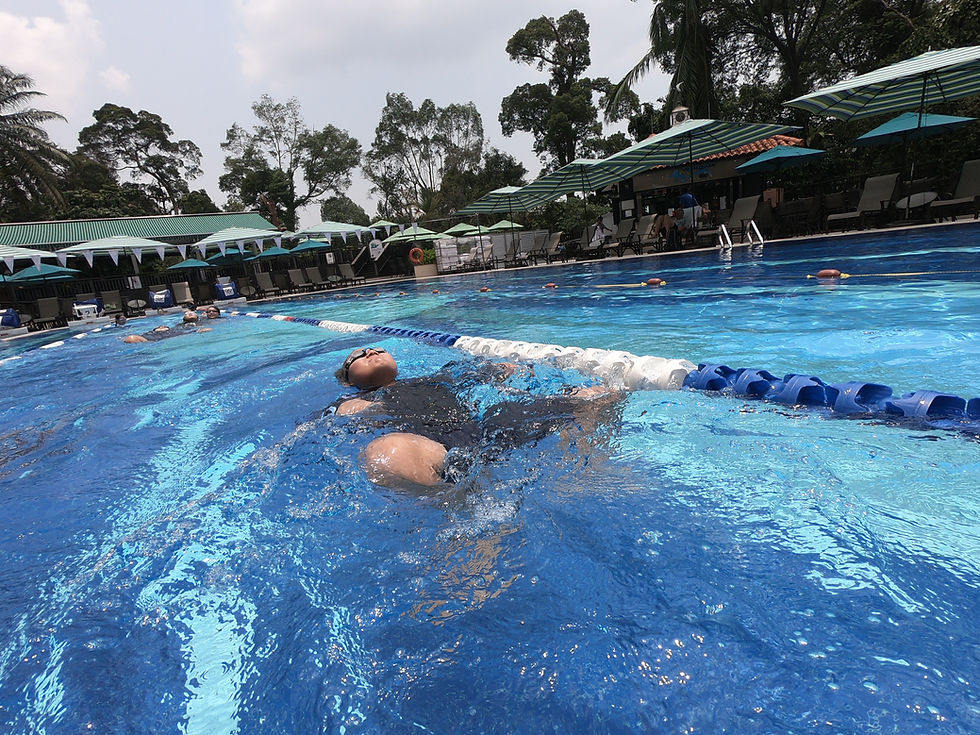Water Safety Tips for Parents: Keeping Kids Safe Around Water
- SG Sink Or Swim

- May 1
- 3 min read

Water can be a source of fun, relaxation, and learning for kids — but it also comes with serious risks. Drowning remains one of the leading causes of accidental death for children under the age of five. Whether you're spending time at the pool, beach, or even in your backyard, active supervision and preventive measures are crucial.
This guide provides essential water safety tips for parents to help keep children safe around any body of water.
🧠 Why Water Safety Is Non-Negotiable
Children can drown in as little as a few inches of water, and it can happen silently and quickly. Water safety isn’t just about strong swimming — it’s about prevention, awareness, and quick response.
✅ Top Water Safety Tips for Parents
1. Always Supervise, No Exceptions
Never take your eyes off children in or near water — even for a second.
Stay within arm’s reach of toddlers and young swimmers.
Avoid distractions like phones, books, or conversations.
👁️ Use the “Water Watcher” rule — designate one adult to supervise actively at all times.
2. Enroll Your Child in Swim Lessons Early
Start with water familiarity classes for infants and toddlers.
Formal swim lessons can reduce the risk of drowning by up to 88%.
Choose certified instructors who understand child development and water safety.
3. Teach Basic Water Rules
Make sure your child knows:
Never enter water without an adult’s permission.
No running or rough play near the pool.
Always swim with a buddy.
4. Fence Off Pools and Secure Water Sources
Install a four-sided fence with a self-closing, self-latching gate around any pool.
Use pool alarms and secure pool covers when not in use.
Empty kiddie pools, buckets, and tubs after each use.
5. Use Proper Floatation Devices
Only use U.S. Coast Guard-approved life jackets.
Avoid relying on floaties or inflatable toys — they’re not life-saving devices.
Make sure life jackets fit snugly and are worn correctly.
6. Be Prepared for Emergencies
Learn CPR and basic rescue techniques — minutes count in emergencies.
Keep a charged phone nearby to call for help.
Have a first-aid kit and rescue gear (like a reaching pole or life ring) near the pool or water area.
7. Stay Vigilant Around All Water Sources
Water safety applies beyond pools and beaches:
Bathtubs
Buckets
Toilets
Fishponds
Drainage ditches
💡 Any body of water can pose a danger to an unsupervised child.
8. Model Safe Behavior
Never dive into shallow water.
Always check depth and water clarity.
Show your child how to enter and exit water safely.
9. Understand the Signs of Drowning
Drowning is often silent — it doesn’t look like thrashing or yelling. Watch for:
Head low in the water, mouth at water level
Glassy or closed eyes
Gasping or hyperventilating
Lack of movement or struggling to stay upright
✅ React immediately if something doesn’t seem right — seconds matter.
👶 Water Safety for Babies and Toddlers
Never leave a baby alone in the bath — not even for a moment.
Use non-slip mats in tubs and keep toilet lids closed.
Begin gentle water exposure and swim readiness activities early under guidance.
🏁 Final Thoughts
Keeping kids safe around water isn’t about being afraid — it’s about being informed, prepared, and present. With the right safety practices, swimming and water play can be joyful, educational, and safe for children of all ages.





Comments